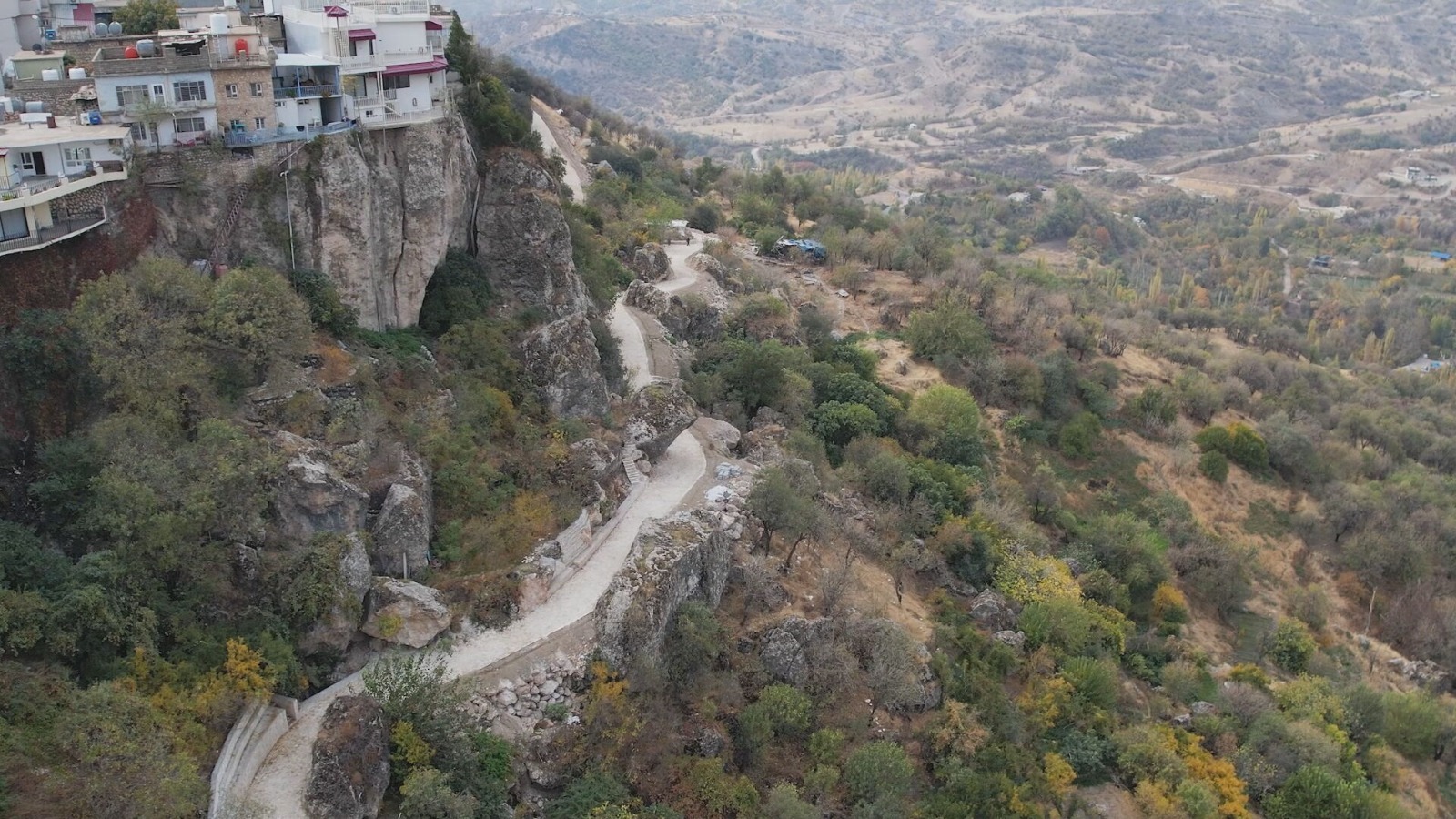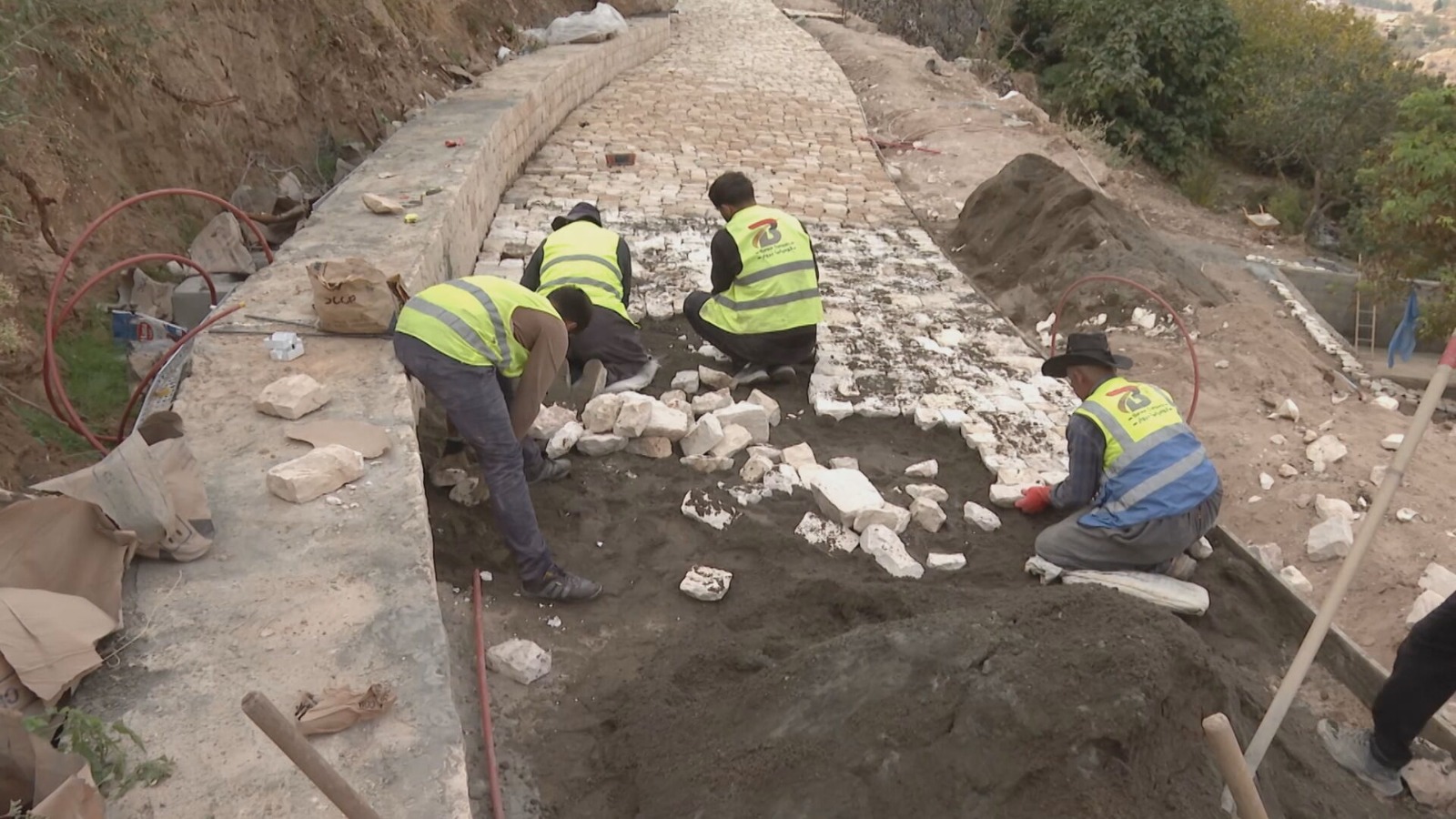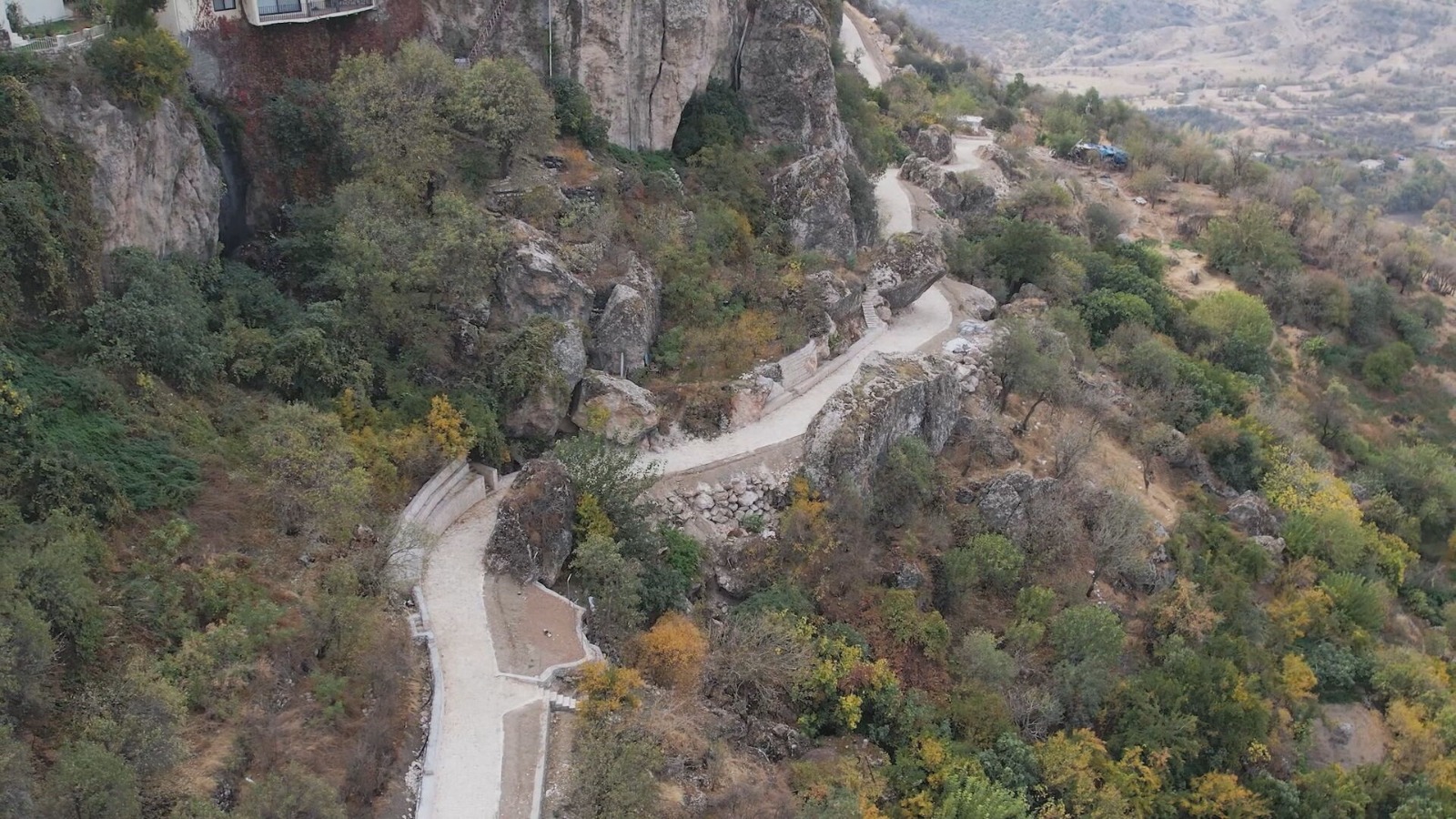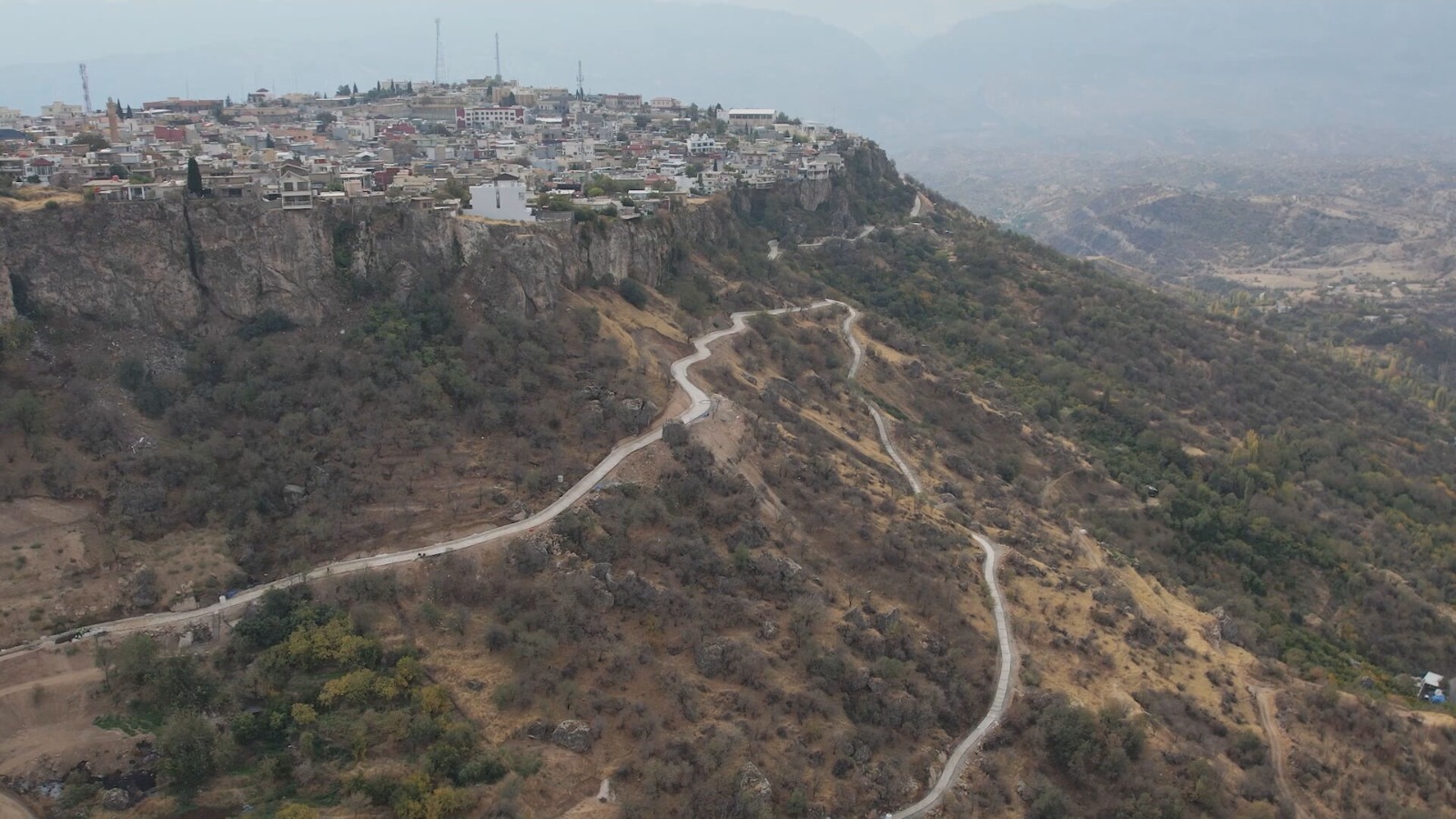Amedi’s Stone Belt Path Poised to Transform the Historic Mountain Town
Historic mountain town set to open a four-kilometer panoramic walkway by year’s end, reinforcing the Kurdistan Region’s push to boost cultural and nature-based tourism.

ERBIL (Kurdistan24) — The picturesque mountain district of Amedi is moving closer to unveiling a major tourism project, as engineering teams continue work on the city’s new “Stone Belt Path,” designed to showcase Amedi’s natural beauty and revive its rich historical character.
The circular stone walkway, now 75% complete, will encircle the ancient hilltop town and connect it to the historic Qubahan School. Local officials say the route is on track to open before the end of the year, offering residents and visitors a panoramic new way to experience one of the Kurdistan Region’s most iconic destinations.
The supervising engineer, Kara Shaban, told Kurdistan24 that construction has been progressing rapidly.
“The project consists of two main phases: the first stretching 400 meters, and the second extending 2,400 meters as a stone pathway surrounding the city,” he explained.
“An additional 400-meter road will link the path directly to the Qubahan School. The remaining work focuses on stone paving, lighting systems, and the installation of protective side barriers.”

Once completed, the five-phase route will span roughly four kilometers, forming a continuous circular walkway that overlooks Amedi’s dramatic cliffs, forested valleys, and neighboring mountain chains.
Beyond its aesthetic value, engineers and local historians say the project restores a vital historical connection long absent from the town’s urban layout.
“This road forms a belt around Amedi and reveals natural scenes that could not be seen from existing routes,” historian and archaeologist Khalid Khayat told Kurdistan24.
“The area is full of caves and sites that were once royal palaces. With its cool climate, flowing springs, and abundant shade, it is an ideal place for hiking and relaxation.”

The Stone Belt Path is funded entirely by the Kurdistan Regional Government (KRG) for 2.3 billion Iraqi dinars. It is one of several tourism-driven infrastructure projects launched under the KRG’s broader strategy to diversify the Region’s economy, reduce reliance on oil revenues, and position the Kurdistan Region as a competitive tourism destination in the Middle East.
In recent years, the KRG has invested in roads, heritage restoration, mountain trails, and hospitality facilities, aiming to leverage the Region’s natural landscapes, archaeological sites, and cooler summer climate to attract millions of visitors annually.

Amedi — with its unique plateau setting, ancient gate, and deep-rooted cultural heritage — has been a centerpiece of these development plans.
Officials believe the new walkway will help integrate the city into a growing network of tourist-friendly sites across the Region, encouraging longer stays and increased local spending.

With the inauguration expected by year’s end, Amedi is preparing for a surge of visitors drawn to its quiet nature, dramatic vistas, and historically significant routes.
Local authorities hope the Stone Belt Path will become a signature attraction, reinforcing the town’s reputation as one of the Kurdistan Region’s most beautiful and storied destinations.
